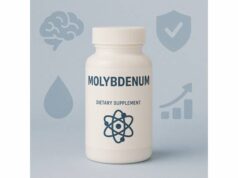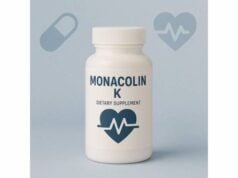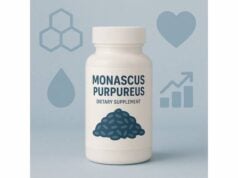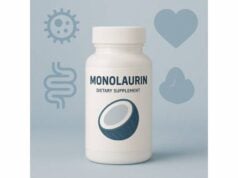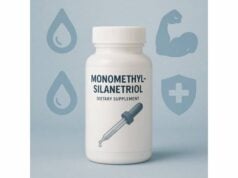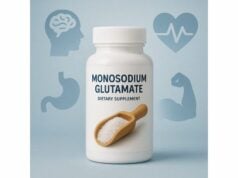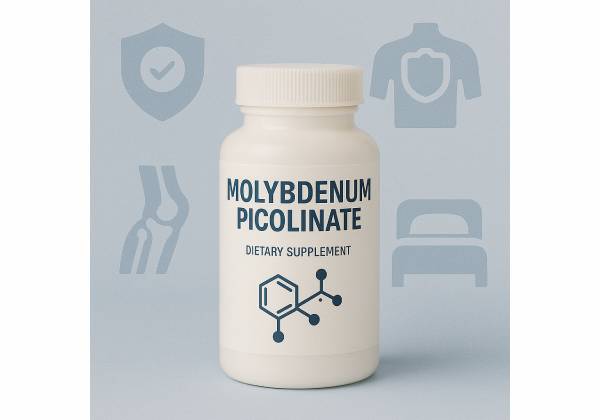
Molybdenum picolinate is a chelated form of the essential trace mineral molybdenum. Your body uses molybdenum in vanishingly small amounts—measured in micrograms—to build the molybdenum cofactor, which switches on four enzymes central to everyday chemistry: sulfite oxidase (handles sulfites from foods and drinks), xanthine oxidase and aldehyde oxidase (process purines and various compounds), and mARC (reduces specific nitrogen-containing molecules). While most people meet needs through legumes, whole grains, and nuts, interest in supplements has grown around sulfite sensitivity, highly restrictive diets, and medical nutrition. This guide translates the science into practical steps: what molybdenum picolinate is, when it makes sense to use, what outcomes to expect, how to pick a product, safe dosage ranges, and who should steer clear. Expect clear numbers, food-first advice, and a sober look at benefits and limits. If you decide to try it, you will know exactly how to keep intake within established safety margins and how to judge whether it is doing anything useful for you.
Quick Overview
- Supports sulfite processing and other cofactor-dependent enzymes; benefits are quiet and context-specific.
- Practical supplemental range: 25–150 mcg/day elemental molybdenum, taken with meals.
- Respect upper limits: ~600–2,000 mcg/day for adults from all sources, depending on regional guidance.
- Avoid unsupervised use in gout, significant kidney disease, pregnancy, or suspected copper deficiency.
Table of Contents
- What is molybdenum picolinate?
- Does it work and who is it for?
- Evidence-backed benefits and realistic limits
- How to choose and use it correctly
- How much to take each day?
- Side effects, interactions, and who should avoid
What is molybdenum picolinate?
Molybdenum picolinate is a supplemental form in which elemental molybdenum is bonded to picolinic acid, the conjugate base of picolinic acid that commonly appears in mineral chelates (you may recognize the same ligand from chromium picolinate). In the digestive tract, the complex dissociates and releases molybdate (MoO₄²⁻), the bioactive species used to assemble the molybdenum cofactor. The cofactor then activates four enzymes: sulfite oxidase, xanthine oxidase, aldehyde oxidase, and mARC. Without the cofactor, these enzymes cannot function normally.
A crucial practical point is that the elemental molybdenum amount—listed on labels in micrograms (mcg)—is what matters for physiology and safety. The chelate (picolinate) is just the carrier. Other forms sold—sodium molybdate, ammonium molybdate, molybdenum glycinate, or molybdenum citrate—also release molybdate. In healthy adults eating a typical mixed diet, there is no compelling evidence that picolinate outperforms common salts in clinically meaningful ways. Absorption of soluble molybdate is already high, and kidneys regulate excess by urinary excretion.
Food sources usually cover needs. Legumes (lentils, chickpeas, black beans), whole grains (oats, barley, wheat), and nuts supply most dietary molybdenum, though soil and water content can shift exact values. Because your daily requirement is tiny, deficiency from ordinary food patterns is rare in free-living adults. Supplementation becomes relevant in narrow contexts: highly restrictive eating, medically prescribed nutrition (including parenteral nutrition), or short trials coordinated with sulfite-containing meals for people exploring symptom triggers.
What molybdenum picolinate does not do is “supercharge detox” or boost energy. Its job is humbler: ensure cofactor-dependent enzymes run at baseline speed. If marketing implies dramatic benefits unrelated to enzyme adequacy, treat those claims skeptically. In practice, a well-chosen low dose—when there is a reason to use it—can be a tidy tool. But more is not better; this is a microgram mineral with established upper intake limits.
Does it work and who is it for?
“Molybdenum picolinate works” in the literal sense that it supplies elemental molybdenum to build the cofactor those four enzymes require. Whether you experience any noticeable benefit depends on your diet, your health status, and what problem you are trying to solve.
Who might reasonably consider it (with professional guidance):
- People troubleshooting sulfite sensitivity. Sulfite oxidase depends on the molybdenum cofactor to convert sulfite (from some wines, dried fruits, condiments, and processed foods) to sulfate for excretion. If your habitual intake of molybdenum has been marginal and you react to sulfite-heavy meals, ensuring adequacy could reduce symptom intensity. Responses vary because wine reactions, for example, can also involve histamine or alcohol—not just sulfites.
- Individuals on very restricted diets. During elimination diets that limit legumes and whole grains—or in medically prescribed formulas—the risk of falling short rises modestly. A short, low-dose “insurance” course can make sense while you re-expand your menu.
- Medical nutrition. In parenteral nutrition, trace elements, including molybdenum, are deliberately included under supervision. Over-the-counter products are not needed in this setting unless advised by a clinician.
Who likely does not benefit:
- Healthy adults eating varied diets. Most meet or exceed daily needs without trying. Adding extra molybdenum rarely changes how you feel or perform.
- People expecting generic “detox.” Once enzyme needs are met, higher intakes do not make those enzymes work “faster” in helpful ways.
What a realistic response looks like:
- If sulfites are a genuine trigger and your prior intake was modest, bringing intake to recommended levels may make sulfite-heavy meals more predictable. Improvements—if any—tend to be subtle (for instance, fewer or milder flushing episodes). A structured food-and-symptom log is essential for judging whether supplementation mattered.
Who should not self-experiment:
- Those with gout or elevated uric acid. Because xanthine oxidase produces uric acid, more molybdenum may be counterproductive.
- People with significant kidney disease. Kidneys clear molybdenum; impaired function raises exposure risk for a given dose.
- Pregnancy and lactation. Prenatal formulations already account for trace minerals; do not add a standalone molybdenum product unless advised.
Bottom line: molybdenum picolinate is a precise tool, not a wellness panacea. Use it for specific purposes, at small doses, and only after you have explored simple dietary strategies.
Evidence-backed benefits and realistic limits
What “benefit” means here. With molybdenum, the benefit is quiet: four cofactor-dependent enzymes operate as designed. Unlike stimulants or large-dose vitamins, you are unlikely to “feel” an effect when intake moves from adequate to slightly higher. That is normal and appropriate for a microgram trace element.
Potential advantages of getting enough (not too much):
- Smoother sulfite handling when intake was borderline and you commonly consume foods or drinks with added sulfites. For some, this translates to fewer or milder flushing or wheezing episodes after sulfite-heavy meals; for others, nothing changes—because a different trigger was at play.
- Predictable metabolism for certain compounds. Adequate cofactor availability reduces one source of variability for aldehyde oxidase and related enzymes that help process diverse molecules (including some medications). “Adequate” does not guarantee a specific drug response; it simply avoids insufficiency.
- Nutritional continuity during restriction. When legumes and whole grains are temporarily limited, a small supplement can bridge the gap while you reintroduce those foods.
Clear limits to keep front and center:
- Deficiency in healthy adults is uncommon. Most free-living adults in developed regions consume enough through diet. If you are looking for an energy, mood, or weight-loss lift, molybdenum is not the lever to pull.
- Form is less important than dose. Picolinate is a valid ligand, but soluble molybdenum salts are well absorbed. What matters clinically is the elemental mcg you take and your total intake from all sources relative to recognized limits.
- Ceilings exist. Chronic high intakes can nudge uric acid upward and, when sustained, may interfere with copper metabolism. Rare reports link very high exposures to neurologic issues. Staying inside established upper limits avoids these problems.
Where molybdenum picolinate can shine—tactically:
- Elimination and reintroduction phases. When you are systematically testing food triggers, standardize trace element adequacy so results are easier to interpret. If a two-to-four-week, low-dose trial does not change your response to sulfite-labeled foods, stop the supplement and look elsewhere (histamine, alcohol, portion size).
- Short-term “insurance” on narrow diets. A micro-dose supplement can keep enzyme systems on autopilot while you rebuild a varied plate.
What it will not do:
- Detoxify heavy metals, “boost liver function,” or accelerate fat loss. Those claims misrepresent how molybdenum works.
In summary, the best-case benefit is quiet confidence that four enzyme systems have what they need. If your symptom diary stays the same after a defined trial, the supplement is not earning its keep.
How to choose and use it correctly
1) Read the label for elemental mcg. Choose products that clearly state “Molybdenum (as molybdenum picolinate) — XX mcg.” Ignore the compound weight; it is the elemental amount that counts for biology and safety. Capsules commonly range from 25 to 500 mcg. For most people, the low end (25–150 mcg) is appropriate.
2) Keep your purpose specific.
- Diet-coverage micro-dose: 25–75 mcg/day while you re-expand legumes and whole grains.
- Sulfite-focused trial: 25–150 mcg/day, paired with meals likely to contain added sulfites.
- Medical nutrition: handled by your clinical team; do not add over-the-counter molybdenum on top.
3) Prefer simple formulas. Single-ingredient molybdenum picolinate reduces confounding. If a multivitamin or multimineral already includes molybdenum, count that toward your daily total. Avoid “detox blends” that pair high-dose molybdenum with botanicals you do not need.
4) Time it with food. Absorption of molybdate is good with or without food, but taking with meals improves comfort and aligns intake with sulfite exposure. For testing a specific meal, take your dose 15–30 minutes beforehand and log the outcome.
5) Look for quality signals. Responsible brands disclose the elemental amount, identify the form (picolinate), and provide lot-specific third-party testing for potency and contaminants. Consistency matters more than fancy claims about “superior chelation.”
6) Track what matters. If you are exploring sulfite tolerance, keep a simple log for 2–4 weeks: date, food item, portion, label sulfites if known, timing of the supplement, and symptoms. Decide in advance what “success” would look like (e.g., fewer flushing episodes, milder wheeze, less need for rescue meds if prescribed). If you do not see it, stop.
7) Pair with food-first habits. Long-term, let everyday foods carry the load. A few weekly servings of legumes and whole grains typically cover molybdenum along with fiber, plant protein, iron, and B vitamins. Supplements should be the exception, not the foundation.
8) Respect the ceiling. Regional upper limits for adult total intake (food plus supplements) generally fall between ~600 mcg/day (a conservative European benchmark) and ~2,000 mcg/day (a U.S. benchmark). Keep your total well below the strictest limit that applies to you.
9) Know when to get help. If you have gout, kidney disease, copper-related concerns, are pregnant or breastfeeding, or take complex medication regimens, ask your clinician before starting molybdenum picolinate. Trace elements sound simple but can complicate these conditions.
Used this way, molybdenum picolinate becomes a small, tidy tool—useful for specific scenarios and unnecessary for most people most of the time.
How much to take each day?
Start with why you are taking it, then choose the lowest dose that serves that purpose—always thinking in micrograms (mcg) and accounting for all sources (diet, multivitamin, multimineral, special “detox” formulas).
Daily requirement and reference values
- General adult requirement: Widely used reference values set the target around 45 mcg/day from total intake. Most adults hit or exceed this just by eating a normal, mixed diet.
- European guidance: Where classic requirements could not be derived, an Adequate Intake around 65 mcg/day for adults has been used. This underscores how small daily needs are.
Upper limits (from all sources, including food and fortified products)
- Conservative adult UL: approximately 600 mcg/day in some European risk assessments.
- U.S. adult UL: 2,000 mcg/day.
When in doubt, follow the lower limit recommended locally and stay comfortably below it.
Practical dosing scenarios
- Diet-coverage micro-dose: 25–75 mcg/day for several weeks while you rebuild variety (legumes, whole grains, nuts).
- Sulfite-focused trial: 25–150 mcg/day, typically with or just before a meal that may contain sulfites (e.g., certain wines, dried fruits, sauces). If no benefit appears in 2–4 weeks, discontinue.
- Already taking a multivitamin: Many multis contain ~45–100 mcg. In that case, a separate molybdenum picolinate capsule is usually unnecessary; adding one can push your total toward upper limits without clear upside.
Special populations and contexts
- Pregnancy and lactation: Prenatal formulations already cover trace elements. Do not add standalone molybdenum unless your clinician recommends it for a specific medical reason.
- Kidney disease: Because the kidneys clear molybdenum, even modest supplemental doses can raise exposure; use only under medical oversight.
- Gout or hyperuricemia: Since xanthine oxidase produces uric acid, stay at the low end of intake—or avoid supplementation—unless your clinician advises otherwise and monitors uric acid.
Why “bigger” is not better
High-dose capsules (250–500 mcg) can crowd your daily budget, especially if combined with a multivitamin and a legume-rich diet. There is no advantage to approaching the ceiling; the goal is sufficiency, not “more.” If you do not have a clear, measured benefit, stop rather than habitually dosing “just in case.”
Counting your total
- Add molybdenum from all supplements (labels list elemental mcg).
- Consider dietary patterns: frequent legumes and whole grains add up.
- Reassess monthly. If your reason for starting no longer applies—or the trial yielded no benefits—discontinue.
This is a microgram mineral. A small nudge suffices; a heavy hand only increases the chance of side effects.
Side effects, interactions, and who should avoid
Tolerance at nutritional doses
At 25–150 mcg/day, most people experience no issues, especially when doses are taken with food. Mild stomach upset is uncommon and typically resolves by lowering the dose or taking it with a meal.
Risks that rise with higher or prolonged intakes
- Uric acid and gout. Xanthine oxidase—one of the molybdenum-dependent enzymes—produces uric acid. Higher molybdenum exposure can nudge uric acid upward. If you have gout or borderline uric acid, avoid unsupervised use.
- Copper status. Chronically high molybdenum may antagonize copper metabolism, contributing to anemia or neurologic complaints. This is unlikely at small, short-term doses but becomes plausible with sustained excess or overlapping products.
- Neurologic symptoms at extreme intakes. Very high, long-term intakes have been linked in case reports to neuropsychiatric effects. Staying within upper limits avoids this scenario.
- Kidney handling. Reduced renal function impairs molybdenum clearance, increasing exposure for any given dose.
Medication and nutrient considerations
- Copper-chelating therapy (e.g., for Wilson’s disease): Do not add over-the-counter molybdenum without specialist approval; unintended copper lowering is possible.
- Drugs metabolized by aldehyde oxidase or mARC: Ensuring adequacy avoids insufficiency, but routine clinical interactions at small nutritional doses are not well defined. When starting or stopping any supplement, watch for changes and inform your care team.
- Alcohol and histamine-rich foods. If reactions to wine or fermented foods persist despite a trial, the driver may not be sulfites. Avoid escalating doses; focus on alternative triggers.
Who should avoid self-directed use
- Pregnant or breastfeeding individuals unless specifically advised by a clinician.
- People with gout or persistently high uric acid.
- Those with moderate-to-severe kidney disease.
- Anyone with unexplained anemia, neuropathy, or suspected copper deficiency until evaluated.
Stop and seek medical advice if you notice:
New or worsening joint pain, unusual fatigue or pallor, numbness or tingling, cognitive changes, severe headaches, or seizures after starting a high-dose product.
Smart safety habits
- Use the lowest effective dose for the shortest sensible duration.
- Keep your total daily intake well below your region’s upper limit.
- Maintain a symptom and intake log during trials; if nothing improves, stop.
- Return to a food-first pattern: a few servings per week of legumes and whole grains typically cover needs.
Used thoughtfully, molybdenum picolinate can fill a narrow nutritional gap. Used casually at high doses, it can create new problems.
References
- Molybdenum – Health Professional Fact Sheet 2021 (Guideline)
- Overview on Tolerable Upper Intake Levels as derived by the Scientific Committee on Food (SCF) and the EFSA Panel on Dietetic Products, Nutrition and Allergies (NDA) 2025 (Guideline)
- Molybdenum – a scoping review for Nordic Nutrition Recommendations 2023 – PubMed 2023 (Systematic Review)
- Molybdenum Cofactor Deficiency in Humans 2022 (Review)
Disclaimer
This guide is educational and not a substitute for professional medical advice, diagnosis, or treatment. Always consult a qualified healthcare professional before starting, stopping, or combining supplements—especially if you are pregnant or breastfeeding, have kidney disease, gout, copper-related disorders, or take prescription medications. If you try molybdenum picolinate, use the lowest effective dose for the shortest time and keep total daily intake within the limits recommended in your country.
If you found this article helpful, please consider sharing it on Facebook, X (formerly Twitter), or your preferred platform, and follow us for more evidence-based guidance. Your support helps us continue producing high-quality, reader-first content.

